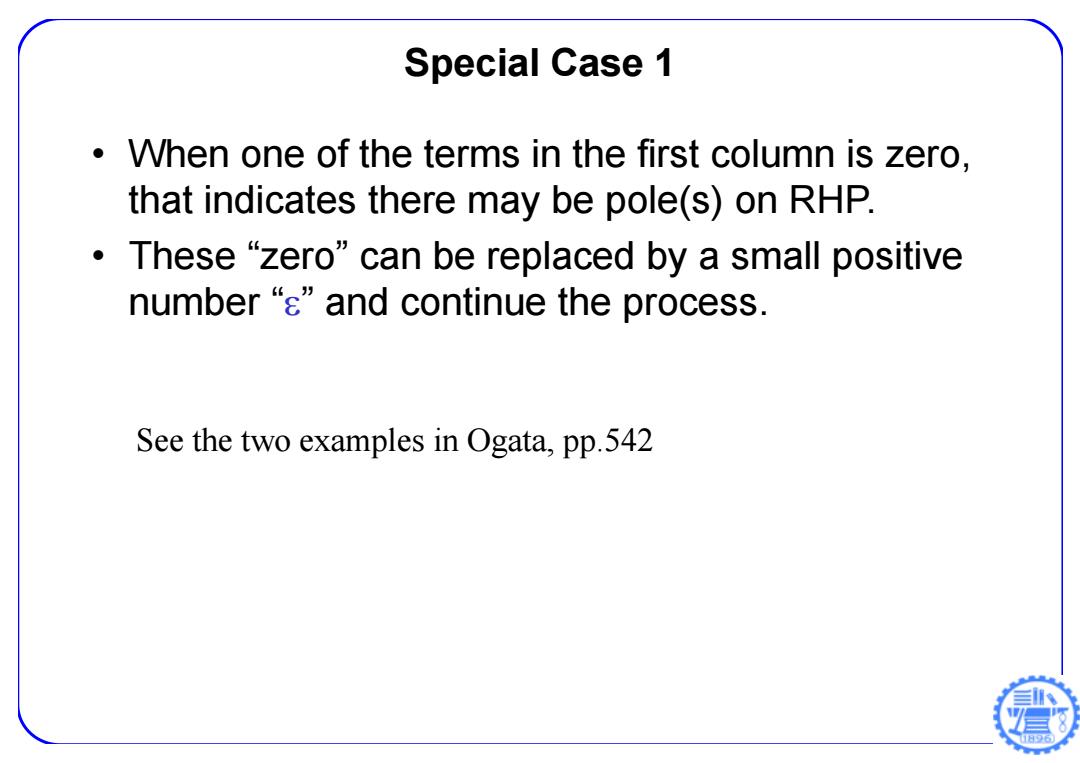
Special Case 1 When one of the terms in the first column is zero, that indicates there may be pole(s)on RHP. ·These“zero”can be replaced by a small positive number“e”and continue the process. See the two examples in Ogata,pp.542
Special Case 1 • When one of the terms in the first column is zero, that indicates there may be pole(s) on RHP. • These “zero” can be replaced by a small positive number “” and continue the process. See the two examples in Ogata, pp.542
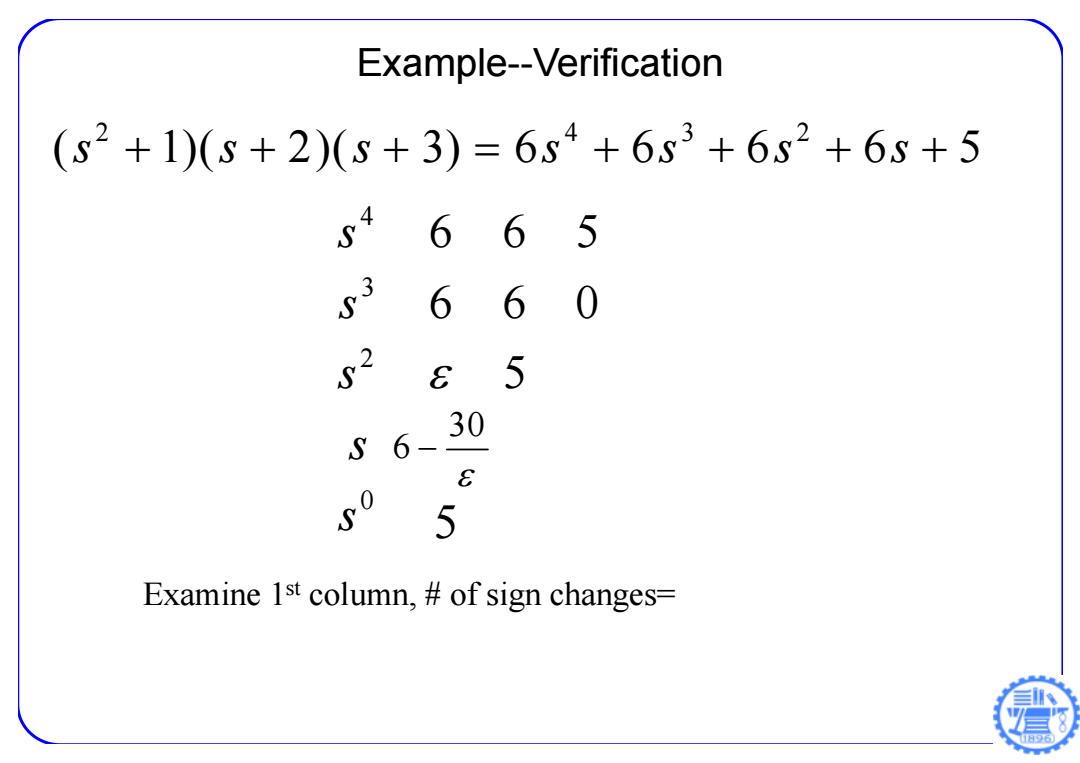
Example--Verification (s2+1)(s+2)(s+3)=6s4+6s3+6s2+6s+5 6 65 6 6 E 5 30 S E 5 5 Examine 1st column,of sign changes= 6
Example--Verification 2 432 ( 1)( 2)( 3) 6 6 6 6 5 s s s ssss 4 3 2 0 665 660 5 s s s s s 30 6 5 Examine 1st column, # of sign changes=
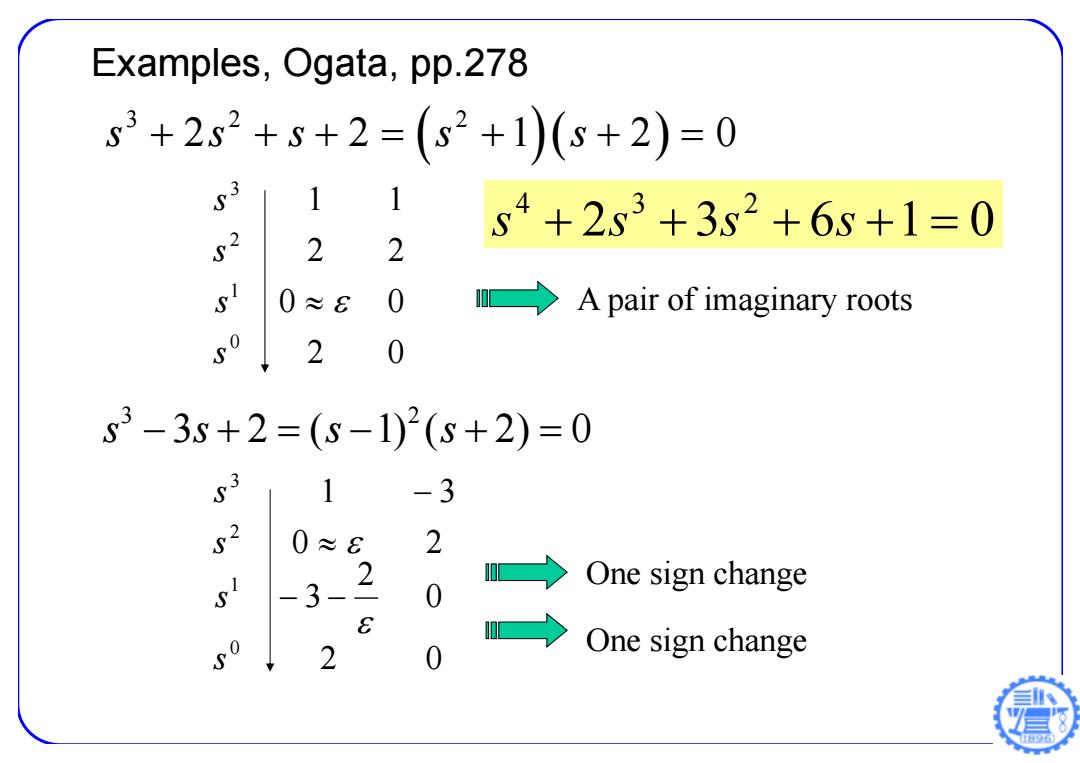
Examples,Ogata,pp.278 s3+2s2+s+2=(s2+1)(s+2)=0 s3 1 s4+2s3+3s2+6s+1=0 s2 2 2 s 0 0 A pair of imaginary roots 2 s3-3s+2=(s-1)2(s+2)=0 1 -3 s2 0≈8 2 -3 2 0 →One sign change → 2 One sign change
2 0 0 0 2 2 1 1 0 1 2 3 s s s s 32 2 s ss s s 2 2 1 20 Examples, Ogata, pp.278 2 0 0 2 3 0 2 1 3 0 1 2 3 s s s s A pair of imaginary roots One sign change One sign change 2 3 6 1 0 4 3 2 s s s s 3 2 ss s s 3 2 ( 1) ( 2) 0
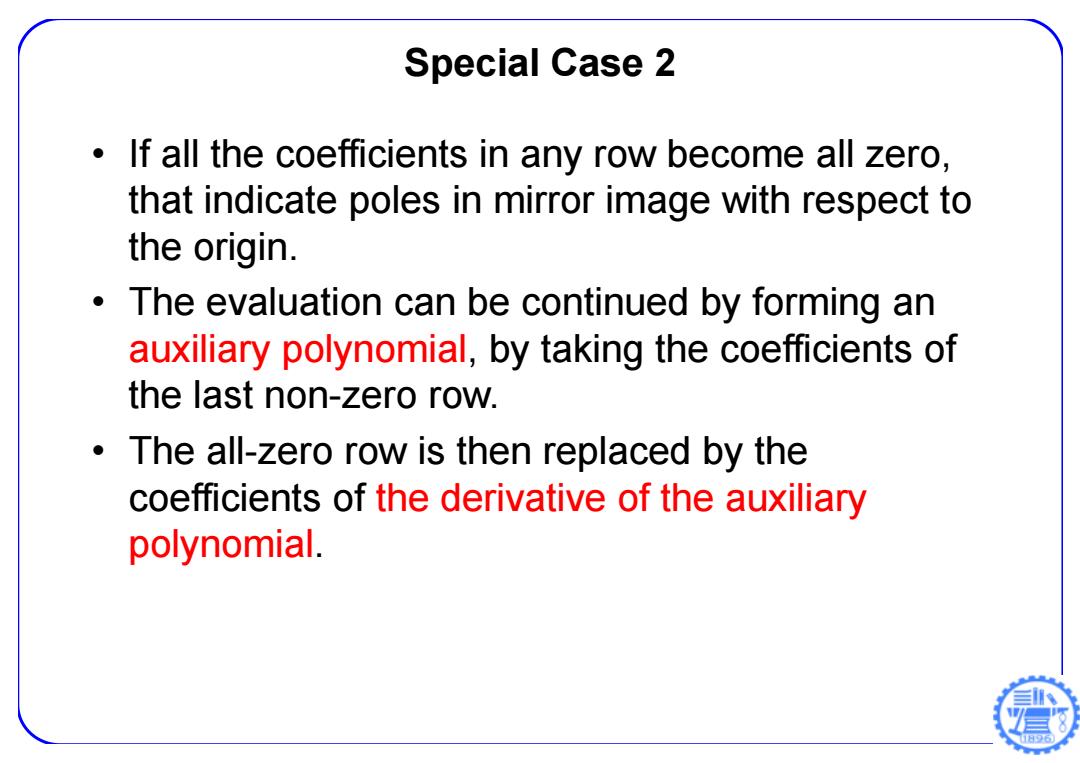
Special Case 2 If all the coefficients in any row become all zero, that indicate poles in mirror image with respect to the origin. The evaluation can be continued by forming an auxiliary polynomial,by taking the coefficients of the last non-zero row. The all-zero row is then replaced by the coefficients of the derivative of the auxiliary polynomial
Special Case 2 • If all the coefficients in any row become all zero, that indicate poles in mirror image with respect to the origin. • The evaluation can be continued by forming an auxiliary polynomial, by taking the coefficients of the last non-zero row. • The all-zero row is then replaced by the coefficients of the derivative of the auxiliary polynomial
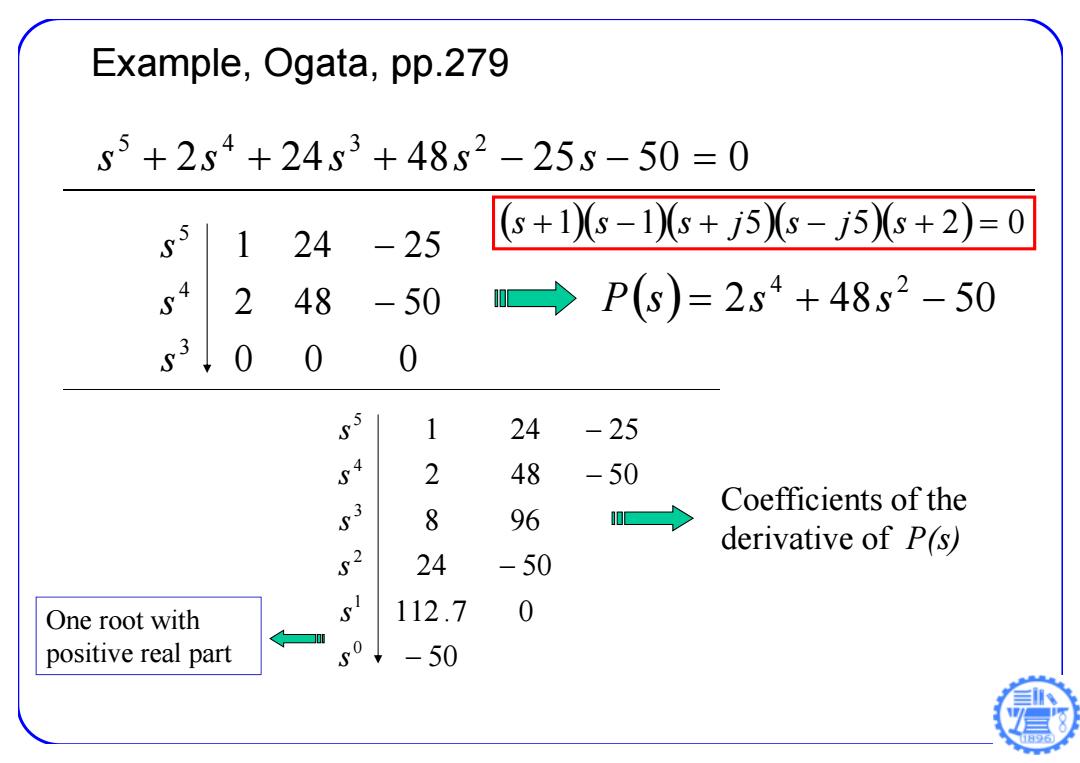
Example,Ogata,pp.279 s5+2s4+24s3+48s2-255-50=0 1 24-25 (6+10s-1s+j5s-j5g+2)=0 2 48-50 →P(s)=2s4+48s2-50 53 ,0 0 0 1 24 -25 2 48 -50 Coefficients of the 8 96 derivative of P(s) 24 -50 One root with 112.7 0 positive real part 50 -50
Example, Ogata, pp.279 2 24 48 25 50 0 5 4 3 2 s s s s s 0 0 0 2 48 50 1 24 25 3 4 5 s s s 2 48 50 4 2 P s s s 50 112.7 0 24 50 8 96 2 48 50 1 24 25 0 1 2 3 4 5 s s s s s s Coefficients of the derivative of P(s) One root with positive real part s 1 s 1 s j 5 s j 5 s 2 0